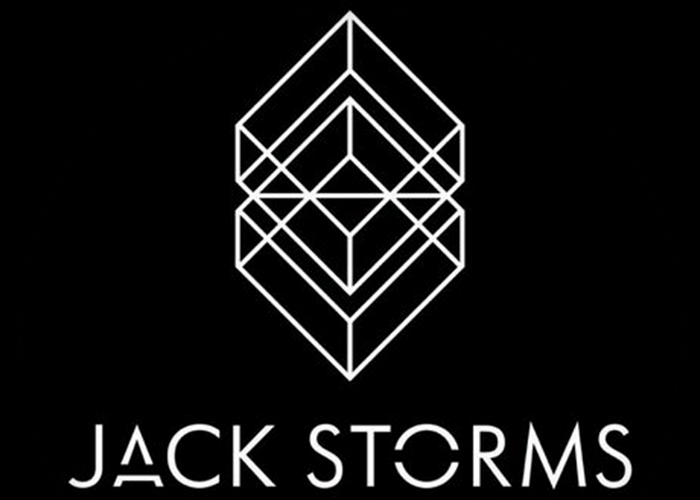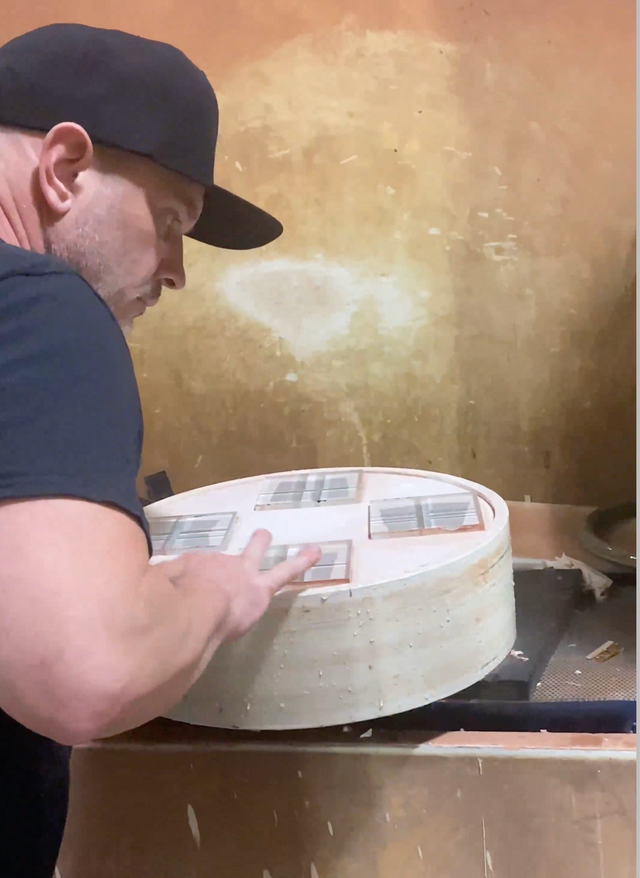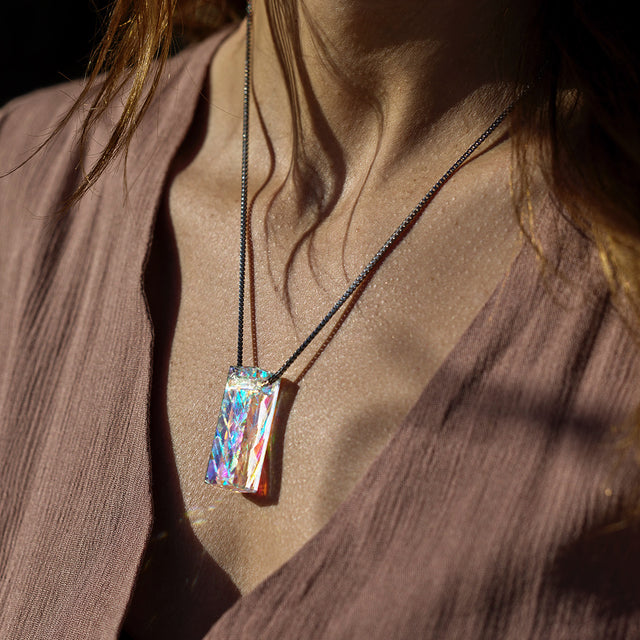My Process
My name is Jack Storms and what I do for a living is I create optic sculptures created out of glass and I coldwork them. So what makes that distinctive is that 99.9% of the art glass that's been seen in museums and galleries is made with the aid of heat so they use a kiln, they use an open flame, they blow glass, right.
So what I do is something completely different. I use flat surfaces to grind and shape and polish all these pieces that you see right here and assemble them just working with a flat surface.
If I was to walk you through a timeline and a process of how long this takes to create, I'd start with a large block of Optic Crystal usually weighing anywhere from 40 pounds to 80 pounds and it comes in a big huge block and what I do with that large block is I take a very large tile saw and I start cutting it down into smaller more manageable pieces.
Then what I do is take these pieces and I start grinding them down on flat wheels with a grit and water and once they're all flattened then I go for parallel perpendicular so I've got pieces that are predictable and manageable.
Then what I do is I grind them down once they're shaped and my grit will get smaller and smaller and smaller. So I'll start with a 30 grit I'll go to an 80 grit I'll go to a 120 grit I'll go to a 400 I'll go to a pre-polish and then I'll go to a polish.
Every single one of those steps takes a significant amount of concentration and time.
At that point once I've got a polished piece of glass, then what I'll do is I'll laminate it to another piece that I've treated the same way. So it's not just one piece that I'm talking about now, I'm talking about many pieces that are going to go into this composition.
Once I've got that done I start to laminate them together. Once they're laminated together you have to let the epoxy dry for a period of time. You've got to check to make sure the epoxy has bonded correctly. And then once I have that then they can take that composition that I’ve started on and start cutting it and repeating that process again.
So I cut it, take it to the 30, take it to the 80, take it to the 120, the 200, the 400 and then once I've done that I bring it back to the glue room I administer the epoxy with another piece of glass and wait for that epoxy to cure.
I come right back out to the studio and I start that process all over again. That’s how all of these cuts happen. This all started off with one piece of glass that was cut over and over and over again until you have this composition that you see before you.
So the wearable sculptures are a condensed version of what you see here. So for example this right here that you see, this is a core that I was able to shape into a piece of wearable art. This is about 50 of these. The wearables is every bit as beautiful as a large piece of sculpture but the larger pieces of sculpture has much more complexity and has much more time invested in it. And they're very rare and exclusive.



